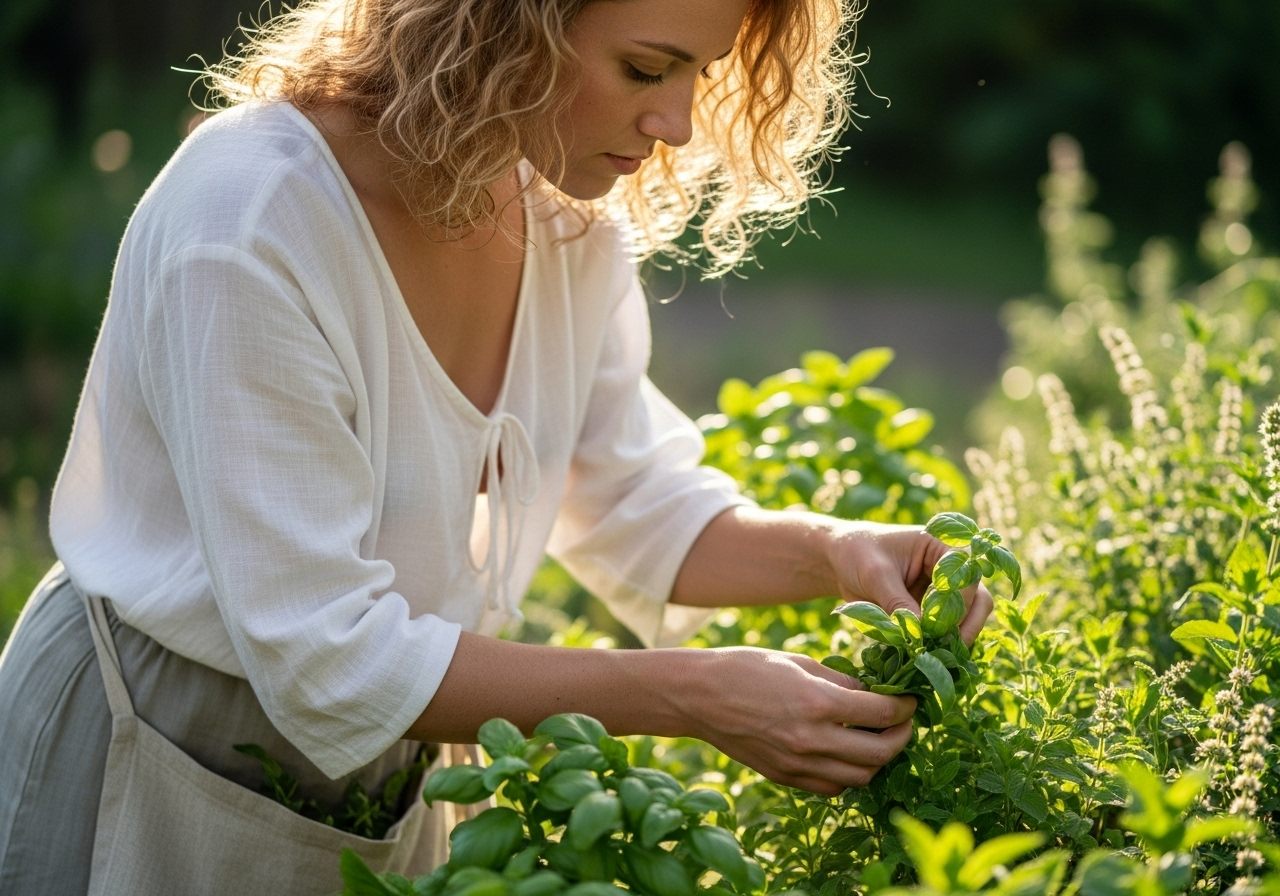Category: Health | 8 min read
Growing Our Medicine Cabinet: Herbs That Actually Work
How we transformed our backyard into a natural pharmacy and learned to treat common ailments with plants instead of pills.
By Admin
Published: 5/13/2025

When my youngest daughter woke up with yet another ear infection last winter, I found myself standing in the pharmacy aisle staring at rows of children's medications, feeling frustrated and helpless. That's when I remembered my grandmother's stories about treating everything with herbs from her garden, and I wondered if there was a better way.
Six months later, our backyard has been transformed into what I like to call our "outdoor pharmacy." What started as curiosity about herbal medicine has become a passion that's changed how our whole family approaches health and healing.
The transition wasn't immediate. I spent months researching, reading everything I could find about medicinal plants, their properties, and safe usage. I connected with local herbalists, took classes, and learned to identify plants properly. Safety became my first priority—some plants can be powerful medicine, but others can be dangerous if misused.
I started with simple, well-known herbs that have been used safely for generations. Chamomile for calming and digestive support, echinacea for immune system strength, calendula for skin healing, and peppermint for digestive upset. These gentle plants became my training ground for learning to work with herbal medicine.
The children were fascinated by the process. They helped plant the herbs, learned to identify them as they grew, and participated in harvesting and preparing simple remedies. Teaching them about plant medicine felt like passing down ancient wisdom that had been lost in our family for generations.
Our first real success came when my middle child developed a nasty cut on his knee during a camping trip. Instead of rushing to urgent care, I cleaned the wound and applied a salve I'd made from calendula and comfrey. The healing was remarkable—faster and cleaner than any antibiotic ointment we'd used before. That moment converted me completely.
I learned to make tinctures, teas, salves, and poultices. Our kitchen began to look like an apothecary, with jars of dried herbs lining the shelves and bottles of homemade remedies in the refrigerator. The children learned to recognize the smell of healing herbs and began asking for "mom's medicine" instead of store-bought alternatives.
Elderberry syrup became our family's secret weapon against colds and flu. Made with fresh elderberries from our own bushes, combined with ginger, cinnamon, and honey, it's both medicine and treat. We've noticed significantly fewer and shorter illnesses since we started taking it regularly during cold season.
The herb garden taught us about timing and seasons in ways that buying pills never could. We learned when to harvest—usually in the morning after the dew dries but before the heat of the day. We discovered which parts of plants hold the most medicine and how to preserve them properly for year-round use.
I developed relationships with local suppliers for herbs we couldn't grow ourselves, learning about quality, sourcing, and ethical wildcrafting. Supporting small herbalists and organic growers became part of our commitment to natural health and sustainable living.
The financial savings surprised me. A bottle of high-quality echinacea tincture can cost $20 in stores, but I can make the same amount for about $3 in materials. Herbs for tea blends, salve ingredients, and tincture supplies cost a fraction of their commercial equivalents.
I learned to treat common ailments naturally—ginger and fennel for stomach upset, willow bark for headaches, rose hips for vitamin C, nettle for allergies. Not everything can or should be treated with herbs, but many minor complaints respond beautifully to plant medicine.
The children now reach for herbal remedies first. They know that chamomile tea helps them sleep, that plantain leaves can soothe bug bites, and that ginger helps with car sickness. They're growing up with a medicine cabinet that connects them to the natural world rather than separating them from it.
Working with plant medicine has deepened my appreciation for the complexity and wisdom of nature. Every plant contains hundreds of compounds that work together in ways we're only beginning to understand. This complexity often makes herbal medicine more effective and gentler than isolated pharmaceutical compounds.
I've learned to listen to my body more carefully, to notice subtle changes and respond with gentle interventions before small problems become big ones. Herbal medicine encourages this kind of awareness and preventive care in ways that conventional medicine often doesn't.
The spiritual aspect of working with plants has been unexpected and profound. There's something deeply satisfying about treating illness with medicine you've grown, harvested, and prepared yourself. It connects healing back to the earth and to traditions that go back thousands of years.
Our medicine cabinet now contains both herbal and conventional remedies. I'm not anti-medicine—I'm grateful for modern healthcare when it's needed. But for many everyday health concerns, plants provide gentle, effective alternatives that work with the body rather than against it.
Teaching other families about herbal medicine has become a passion. Seeing parents discover that they can treat their children's minor ailments with plants they've grown themselves is incredibly rewarding. It's empowering in a way that picking up a prescription never is.
This journey has taught me that health isn't just about treating illness—it's about building resilience, supporting the body's natural healing abilities, and maintaining the kind of vitality that comes from living in harmony with natural rhythms and remedies.
Our outdoor pharmacy continues to grow, both in size and in my knowledge of how to use it effectively. Every season brings new harvests and new opportunities to deepen our relationship with plant medicine.